A
Algaculture
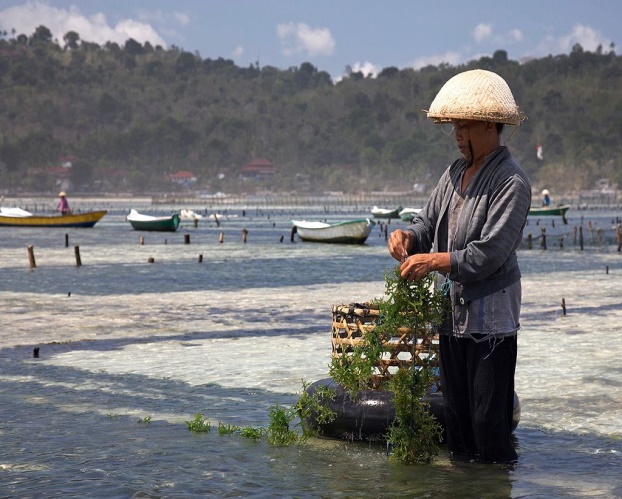
Definition: Algaculture is a form of aquaculture involving the farming of species of algae .
The majority of algae that are intentionally cultivated fall into the category of microalgae (also referred to as phytoplankton , microphytes , or planktonic algae ). Macroalgae , commonly known as seaweed , also have many commercial and industrial uses, but due to their size and the specific requirements of the environment in which they need to grow, they do not lend themselves as readily to cultivation (this may change, however, with the advent of newer seaweed cultivators, which are basically algae scrubbers using upflowing air bubbles in small containers).
Spanish Equivalent: Cultivo de Algas
Grammatical Information: Noun
Example: 1) Algaculture will be of great help to fishermen who depend on uncertain catch from the sea as it adds to the family income.
1)El cultivo de algas será de gran ayuda a los pescadores que dependen de la captura incierto del mar, ya que añade a los ingresos familiares.
2) Algaculture by the Anand Bharthi Foundation has won approval at the Spark the Rise Idea competition conducted by the Mahindra Group of Companies and the project report has been accepted.
2)El cultivo de algas por la Fundación Anand Bharthi ha ganado la aprobación de la chispa del concurso Idea subida realizada por el Grupo Mahindra de Empresas y el informe del proyecto ha sido aceptada.
B
Borrow pit
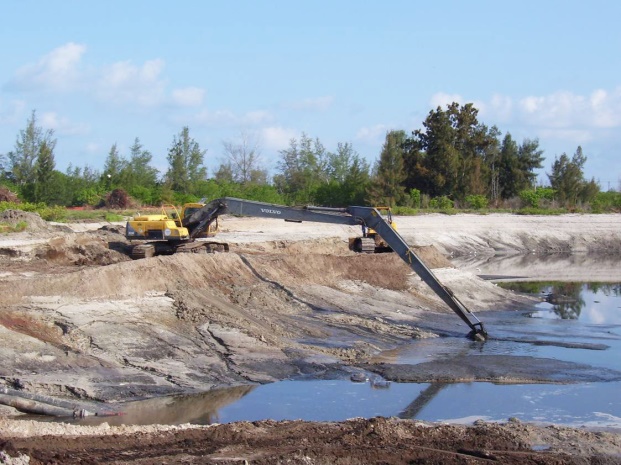
Etymology: First known use of borrow pit was in 1863
Definition: Excavation or area from which soil is taken to build an earth dam, embankment or other construction such as for example irrigated rice field dikes and berms.
Spanish Equivalent: Pozo de préstamo
Word Sense: (civil engineering) an excavation dug to provide fill to make upground elsewhere. /Spanish equivalent: Cantera
Grammatical Information: Noun
Examples: 1) Borrow pits are often much deeper than may be desirable for fish culture making it difficult to catch the fish or drain completely for maintenance and pre-stocking preparation.
1)Los pozos de préstamos son a menudo mucho más profundo de lo que puede ser deseable para el cultivo de peces por lo que es difícil coger el pescado o drene por completo para la mantención y preparación de pre-stocking.
2)Where is it impossible to secure the earth needed for constructing the dikes from the cut envisages, separate borrow pits must be opened.
Best Aquaculture Practices (BAP)
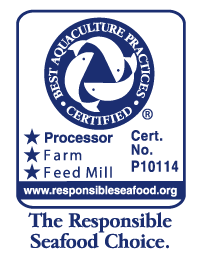
Etymology: : To promote responsible practices across the aquaculture industry, the Global Aquaculture Alliance coordinates the development of Best Aquaculture Practices (BAP) certification standards for farms, feed mills, hatcheries and processing facilities.
Definition: The BAP program drives continued improvements via high standards the deliver significant benefits industrywide. The BAP standards cover aquaculture facilities for a variety of finfish and crustacean species, as well as mussels.
Spanish Equivalent: Buenas Prácticas de Producción Acuícola (BPPA)
Grammatical Information: Noun
Examples: 1) To become BAP-certified, the facility must comply with the requirements stated in the BAP standards and application form.
1)Para obtener la certificación BAP, la instalación debe cumplir con los requisitos establecidos en los estándares BAP y formulario de solicitud.
2) Passing the pilot has resulted in BAP certification for 11 of Marine Harvest Canada’s salmon farm sites located along the coastline of British Columbia.
2) Pasando el piloto ha dado lugar a la certificación BAP para 11 de los sitios de la granja de salmón de Marine Harvest Canadá ubicados a lo largo de la costa de la Columbia Británica.
Biotechnology and Biological Sciences Research Council (BBSRC)

Etymology: They are one of seven Research Councils that work together as Research Councils UK (RCUK). They were funded by the Government's Department for Business, Innovation and Skills (BIS).
Definition: The population, number, or weight of a species that a given environment can support.
Spanish Equivalent: Consejo de investigación de ciencias Biotecnológicas y Biológicas
Grammatical Information: Noun
Example: 1) A gene that helps plants to remain healthy during times of stress has been identified by BBSRC-funded researchers at University of Oxford.
1)Un gen que ayuda a las plantas a permanecer saludable durante momentos de estrés ha sido identificado por los investigadores financiados por el BBSRC en la Universidad de Oxford.
2) A new partnership between two BBSRC strategically-funded institutes is sequencing the genomes of a collection of yeast strains, to help unlock the great biodiversity within them to produce biofuels and other chemicals more sustainably.
2)Una nueva alianza entre los dos institutos financiados estratégicamente BBSRC está secuenciando los genomas de una colección de cepas de levadura, para ayudar a desbloquear la gran biodiversidad dentro de ellos para producir biocombustibles y otros productos químicos de forma más sostenible.
Broodstock
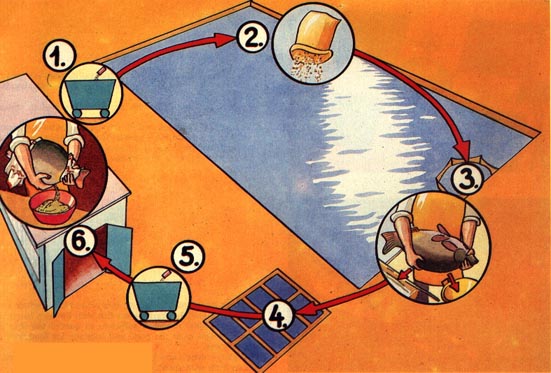
Etymology: Brood + Stock.
Definition: Broodstock, or broodfish, are a group of mature individuals used in aquaculture for breeding purposes.
Spanish Equivalent: Stock de Reproductores
Grammatical Information: Noun
Example: 1) The cull took place at Mpeda's Broodstock Multiplication Centre in Visakhapatnam, after the Union Ministry for Agriculture failed to obtain permission for the sale of the stocks in time.
1)La selección tuvo lugar en el Centro de Multiplicación de Stock de Reproductores de MPEDA en Visakhapatnam, después de que el Ministerio de Agricultura de la Unión no pudo obtener permiso para la venta de las acciones en el tiempo.
2) Broodstock shall be handled in a manner to minimize physical damage and stress and under anaesthesia where appropriate.
2)El Stock de Reproductores se tramitará de manera de reducir al mínimo los daños físicos y el estrés y bajo anestesia, en su caso.
C
Cage Farming Industry
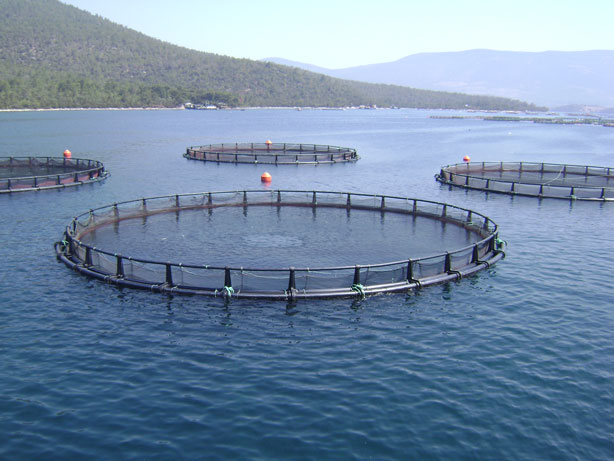
Etymology: Cage farming began in Southeast Asia, although it is thought to be of comparatively recent origin (Ling, 1977). It seems to have developed independently in at least two countries. According to Pantalu (1979), the oldest records of cage culture come from Kampuchea where fishermen in and around the Great Lake region would keep Clarias spp. catfishes and other commercial fishes in bamboo or rattan cages and baskets until ready to transport to market. In captivity, the fishes were fed kitchen scraps and were found to grow readily. This traditional method of culture has been practiced since the end of the last century, and is now widespread throughout the lower Mekong area of the country (Ling, 1977). From here it has spread in recent year to Viet Nam, Thailand and other Indo-Chinese countries.
Definition: Fish farming in cages is a method of producing fish in closed containers at the bottom and on all sides, built of materials that keep the fish inside while allowing water exchange and the removal of waste water around.
Spanish Equivalent: Cultivo en jaulas.
Grammatical Information: Noun
Example: 1) Telangana government plans to implement cage farming technique for production of fish in state. TRS government plans to allot funds for implementation of cage farming technique.
1) El gobierno Telangana planea implementar la técnica de cultivo en jaulas para la producción de peces en estado. Gobierno TRS planea destinar fondos para la aplicación de la técnica de cultivo en jaulas.
2) Cage farming differs from open aquaculture in one major aspect: In cage farming the fish are contained in an artificial enclosure that is placed in the water. Enclosures for cage aquaculture are often located in waters that are utilized for other purposes, or that are populated by species that are not cultivated.
2) El cultivo en jaulas se diferencia de la acuicultura abierta en un aspecto importante: En jaula de cría los peces están contenidos en un recinto artificial que se coloca en el agua. Vallas de la acuicultura en jaulas a menudo se encuentran en las aguas que se utilizan para otros fines, o que están pobladas por especies que no se cultivan.
Carrying Capacity
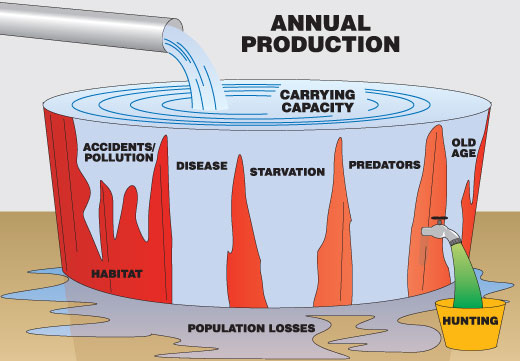
Etymology:The origins of the term carrying capacity are uncertain with researchers variously stating that it was used in the context og international shipping or that it was first used during 19th century laboratory experiments with micro-organisms (1880-85).
Definition: The population, number, or weight of a species that a given environment can support.
Spanish Equivalent: Capacidad de carga.
Grammatical Information: Noun
Example: 1) For nonequilibrium hypotheses, the focus shifts to disturbance and other processes that keep populations well below carrying capacity.
1) Para hipótesis de no equilibrio, el enfoque cambia a la perturbación y otros procesos que mantienen poblaciones muy por debajo de la capacidad de carga.
2) "We thought that we should ask the environment department to conduct a study on the carrying capacity of rivers. We will ask the environment department to float an expression of interest to conduct the study," Noronha said.
2) "Pensamos que deberíamos pedir a la Secretaría de Medio Ambiente para llevar a cabo un estudio sobre la capacidad de carga de los ríos. Vamos a pedir al departamento de medio ambiente de flotar una expresión de interés para llevar a cabo el estudio", dijo Noronha.
Catch basin
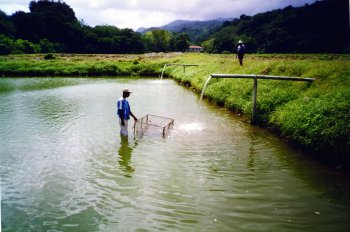
Definition: In totally drainable ponds, a harvesting structure built in the deepest part of the pond, in front of the water outlet; usually drainable so as to harvest the largest fish easily.
Spanish Equivalent: Fosa de captura
Word sense: A receptacle at the entrance to a sewer designed to keep out large or obstructive matter./ Spanish Equivalent: Sumidero.
Grammatical Information: Noun
Example: 1) The shape of the pond also is important for efficient harvesting and usually the bottom is sloped to one end where a catch basin is typically installed for ease of harvest.
1) La forma de la laguna es también importante para la recolección eficiente y por lo general la parte inferior está inclinada a un extremo donde una fosa de captura está instalado típicamente para la facilidad de la cosecha.
2)Prawn ponds are also equipped with catch basins.
2)Los estanques para camarones también están equipados con fosa de captura.
Cold water species
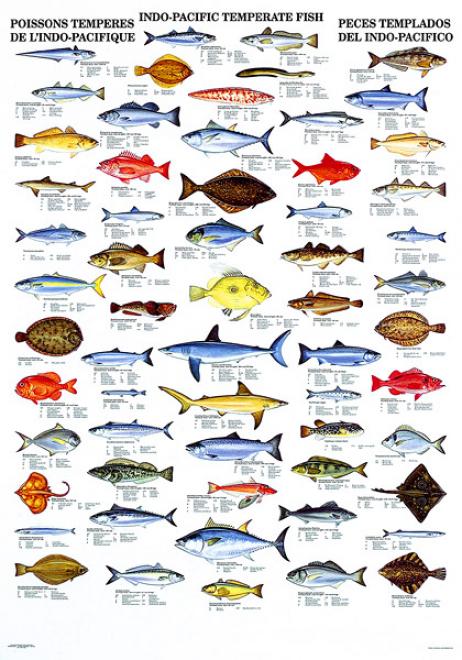
Definition: Generally, fish that spawn in water temperatures below 55°F. The main cultured species are trout and salmon. See Cool water Species; Warm Water Species.
Spanish Equivalent: Especies de aguas frías.
Grammatical Information: Noun.
Example: 1) Cold-water species are highest in omega-3s, and smaller fish or those caught in less polluted waters are safest—for example, wild Alaskan salmon, herring, and sardines.
1) Las especies de aguas frías son más altas en omega-3, y los peces más pequeños o los que están atrapados en las aguas menos contaminadas son ejemplo más segura -por ejemplo, el salmón salvaje de Alaska, el arenque y sardinas.
2) Fish oil (found in salmon and other cold water species).
2) El aceite de pescado (que se encuentra en el salmón y otras especies de agua fría).
Closed containment system aquaculture (CSA)
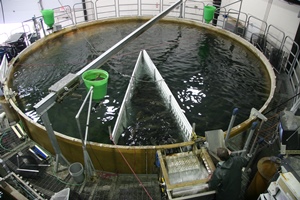
Definition: Closed containment describes a range of technologies for aquaculture; from floating bag systems to land-based recirculating water systems. Closed containment is a barrier technology that attempts to restrict and control interactions between farmed fish and the external aquatic environment.
Spanish Equivalent: Circuito cerrado
Grammatical Information: Noun
Example: 1) “I think that closed-containment would eliminate a lot of the worst problems of salmon and trout open net aquaculture. Pollution from chemical input, waste, biological interaction with wild fish and more would be eliminated,” says Plourde.
1) "Creo que el circuito cerrado eliminaría muchos de los peores problemas de salmón y trucha de acuicultura de red abierta. Contaminación por los insumos químicos, los residuos, la interacción biológica con peces silvestres y más sería eliminado ", dice Plourde.
2)” If the government were to move their interest from open-net aquaculture to land-based, closed-containment farming and pay more attention to their environment, we would be the first to shake their hands and congratulate them,” says Carl Purcell, past president and director of the Nova Scotia Salmon Association.
2) "Si el gobierno tuviera que mover su interés en la acuicultura de red abierta a acuicultura en tierra, la agricultura de circuito cerrado y presta más atención a su entorno, seríamos los primeros en darles la mano y felicitarlos", dice Carl Purcell , ex presidente y director de la Asociación de salmón de Nueva Escocia.
D
Dredge (Dredging)

Definition: (a) Active fishing gear: a towed machine used for the collection of molluscs, e.g. oysters, scallops and mussels, from the seabed. Dredging is the use of such fishing gear.
(b) Excavation equipment used in particular for the removal of soil and sediments, which are too humid and too soft to permit direct access to other type of equipment. Dredging is the use of such a equipment.
Spanish Equivalent: Rastra / Dragar
Grammatical Information: Noun
Example: 1) Some harvest techniques associated with oyster aquaculture such as harvest-
1) Algunas técnicas de cosecha asociados a la acuicultura de ostras como dragado relacionados cosecha reducen directamente las densidades de zostera marina mediante la eliminación de la biomasa vegetal.
2)Until the early 1960s, mussels were harvested by hands from intertidal rocks. Dredging was then introduced, and within a few years the mussel beds inTasman Bay and the Hauraki Gulf were dredged clean.
2) Hasta principios del decenio de 1960, los mejillones fueron cosechadas por las manos de las rocas intermareales. Luego el dragado se introdujo y dentro de unos años los bancos de mejillones en la bahía de Tasmania y el Golfo de Hauraki se dragaron limpias.
E
F
Feed Conversion
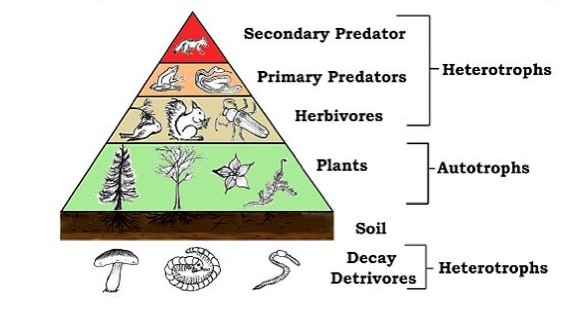
Definition: A ratio of food intake to body weight gain; more generally, the total weight of all feed fed to a lot of fish divided by the total weight gain of the fish lot. The units of weight and the time interval over which they are measured must be the same. The better the conversion, the lower the ratio.
Spanish Equivalent: Transformación de Alimentos
Grammatical Information: Noun
Example: 1) Advanced feed processing techniques contribute to improved feed conversion efficiency and reduced nutrient excretion.
1) Las técnicas de procesamiento de alimentación avanzada contribuyen a la mejora de la eficiencia de la transformación de alimentos y la excreción de nutrientes reducida.
2) The effects on antibiotics on growth and feed conversion in pig poultry and beef are influenced by factors as type of animals production.
2) Los efectos sobre los antibióticos sobre el crecimiento y la transformación de alimentos en aves de corral y carne de cerdo están influenciados por factores como el tipo de producción de los animales.
Freshwater Aquaculture

Definition: Water containing less than 0.05% total dissolved salts by weight.
Spanish Equivalent: Acuicultura de agua dulce
Grammatical Information: Noun
Example: 1) For more than a decade, the NC State Fish Barn program has conducted pioneering research to develop innovative waste treatment technology for freshwater aquaculture.
1) Desde hace más de una década, el programa NC State Fish Barn ha llevado a cabo una investigación pionera para desarrollar la innovadora tecnología de tratamiento de residuos para la acuicultura de agua dulce.
2) India is to get its second freshwater aquaculture research centre in Punjab’s Bathinda district.
2) La India va a conseguir su segundo centro de investigación en acuicultura de agua dulce en el distrito de Bathinda de Punjab.
Feed Formulation
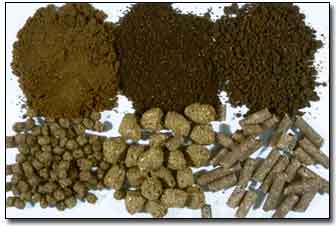
Etymology: from latin pensum
Definition: A combination of ingredients that provides specific amounts of nutrients per weight of feed.
Spanish Equivalent: Pienso compuestos
Grammatical Information: Noun
Example: 1) It is extremely important to continue the research effort to find substitute protein sources in the fish feed formulation.
1) Es extremadamente importante continuar los esfuerzos de investigación para encontrar fuentes de proteínas sustitutorias los piensos compuestos para peces.
2) Following recent developments in feed formulation, fish feed contains more fish oil and fish meal.
2) Después de los últimos acontecimientos en los piensos compuestos, la alimentación de los peces contiene más aceite de pescado y harina de pescado
Fish Hatchery
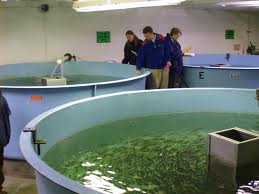
Definition: A fish hatchery is a "place for artificial breeding, hatching and rearing through the early life stages of animals, finfish and shellfish in particular".Hatcheries produce larval and juvenile fish (and shellfish and crustaceans) primarily to support the aquaculture industry where they are transferred to on-growing systems i.e. fish farms to reach harvest size.
Spanish Equivalent: Criadero de peces
Grammatical Information: Noun
Example: 1) The project involves the installation of a fish hatchery to produce 3000 fish per week.
1) El proyecto consiste en la instalación de un criadero de peces para producir 3.000 ejemplares por semana.
2) In Bosnia-Herzergovina, and FAO project is helping war-disabled rural people improve their income by setting up a fish hatchery.
2) En Bosnia-Herzegovina, y el proyecto de la FAO está ayudando a la población rural de la guerra discapacitados mejorar sus ingresos mediante la creación de un criadero de peces.
G
Geothermal system or geothermal heat pump (GHP) systems.
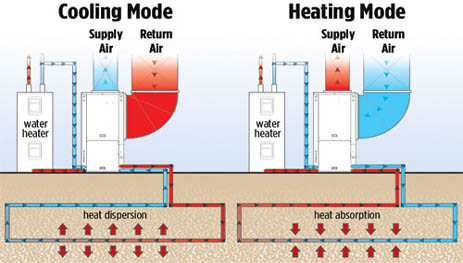
Definition: A geothermal heat pump or ground source heat pump (GSHP) is a central heating and/or cooling system that transfers heat to or from the ground.
Spanish Equivalent: Sistema Geotérmico
Grammatical Information: Noun
Example: 1) There have been geothermal system in place since the 1970s, and today there are at least 30 applications in 12 western states, and in over 15 countries, with the U.S. and China being the world leaders.
1) Se han producido sistema geotérmico en vigor desde la década de 1970, y en la actualidad hay al menos 30 solicitudes en 12 estados del oeste, y en más de 15 países, con los EE.UU. y China de ser los líderes mundiales.
2) The objective of this study is to examine the feasibility of aquaculture tank heating with geothermal systems. Both closed- and open-loop GHP systems are examined for heating uncovered and greenhouse-covered tanks at three locations across the U.S
2) El objetivo de este estudio es examinar la viabilidad de calentamiento de los tanques de acuicultura con sistemas geotérmicos. Ambos sistemas de lazo GHP cerrado y abierto se examinan para la calefacción descubierto y tanques de efecto invernadero cubierto en tres lugares en los EE.UU.
Genus
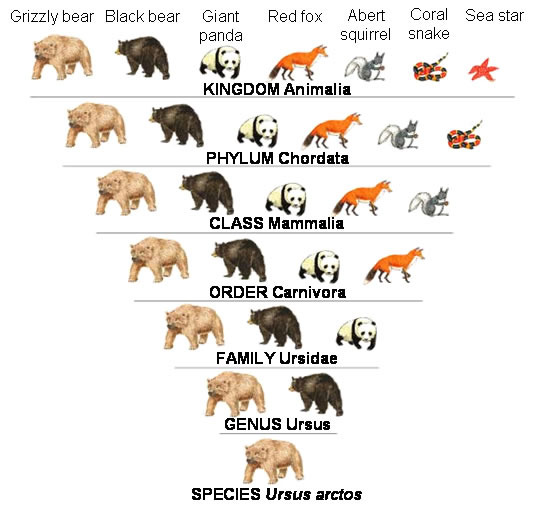
Etymology: (Plural genera), 1550s as a term of logic, “kind of class of things” (biological sense dates from c.1600), from Latin genus (genitive generis) “race,stock,kind; kind; family, birth, descent, origin, “from PIE root *gene-“to produce, five birth, beget, “with derivatives referring to family and trinal groups.
Definition: A unit of scientific classification that includes one or several closely related species. The scientific name for each organism includes designation for genus and species
Spanish Equivalent: Género
Grammatical Information: Noun
Example: 1) The name of the genus and species and the reference of the strain must be shown on the label, with origin and the strain breeder.
1) El nombre del género y la especie y la referencia de la cepa debe ser mostrardo en la etiqueta, con origen y el seleccionador de la cepa.
2)The aquatic vegetation is represented by species of the genus Chara and Ruppia in saltier conditions.
2) La vegetación acuática está representada por especies del género Chara y Ruppia en condiciones más salado.
Gills
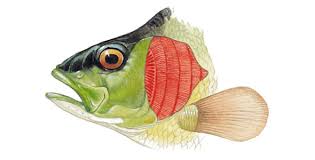
Etymology: “Organ of breathing in fishes”, early 14c, of unknown origin, perhaps related to Scandinavian words, such as Old Norse gjölnar which perhaps means “gills”, and Old Danish -gæln (in fiske-gæln “fish gill”); said to be ultimately from a PIE *ghel-una- ”jaw” (cognate: Greek kheilos “lip”)
Definition: The highly vascular, fleshy filaments used in aquatic respiration and excretion
Spanish Equivalent: Branquias
Grammatical Information: Noun
Example: 1) By filtering water from the bed, the oyster becomes pigmented around its gills.
1) Al filtrar el agua de la cama, la ostra se convierte pigmentada alrededor de las branquias.
2) The blue pigment of the diatoma together with the natural colour of the gills turns the latter green.
2) El pigmento azul de la Diatoma junto con el color natural de las branquias convierte este último en verde.
Gonads
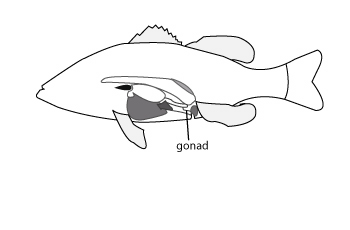
Etymology: 1880, from Modern Latin gonas (plural gonads), coined from Greek gone, gonos, “child, offspring;seed, that which engenders; birth, childbirth; race, stock, family”, related to gignesthai “ be born”, genos” race, birth, descent, from PIE *gon-o-, suffixed form of root *gen- “to give birth, bedget”
Definition: The reproductive organs (testes or ovaries).
Spanish Equivalent: Gónadas.
Grammatical Information:
Example: 1) In addition, observers have collected gonads of tunas for studies of reproductive biology.
1) Además, los observadores han recogido gónadas de atunes para los estudios de la biología reproductiva.
2)… non-aquaculture Pectinidae completely separated from the viscera and gonads, dispatched to the community before the entry into force…
2) ... La acuicultura sin Pectinidae esta completamente separada de las vísceras y las gónadas, enviado a la comunidad antes de la entrada en vigor ...
Global Aquaculture Alliance (GAA)

Etymology: Founding stakeholder members from 12 countries established GAA as a non-profit, based upon a shared vision that aquaculture is vital to feed the world, but it must grow in a coordinated and responsible fashion.
Definition: The Global Aquaculture Alliance is an international, non- profit organization committed to feeding the world through responsiblem sustainable aquaculture. We advocate for improving the entire aquaculture production chain, from feed mills and hatcheries to frms and processing plants, as well as wholesalers ,retailers ,foodservice operators and consumers.
Spanish Equivalent: La alianza global de Acuicultura
Grammatical Information: Noun
Example: 1) GAA recently released some preliminary results, and the full results will be revealed at the Global Aquaculture Alliance’s (GAA) GOAL conference, held in Vancouver, B.C., 26 to 29 October.
1) GAA publicó recientemente algunos resultados preliminares y los resultados completos se dará a conocer en La alianza global de Acuicultura (GAA) conferencia GOAL, celebrada en Vancouver, BC, de 26 a 29 de octubre
2) In the GAA-The Fishin Co. survey, 53 percent of respondents had a positive view of farmed seafood – meaning 47 percent have a negative view of aquaculture – and 88 percent had a positive view of wild seafood. Consumers’ primary concerns were about the quality of farmed seafood, followed by food safety and environmental concerns.
2) En la GAA -La encuesta Fishin Co., el 53 por ciento de los encuestados tenía una visión positiva de los mariscos de piscifactoría ,lo que significa que el 47 por ciento tienen una visión negativa de la acuicultura y el 88 por ciento tenía una visión positiva de marisco salvaje. Principales preocupaciones de los consumidores eran acerca de la calidad de pescados y mariscos de piscifactoría, seguido de la seguridad alimentaria y el medio ambiente.
H
Hazard Analysis Critical Control Point (HACCP)
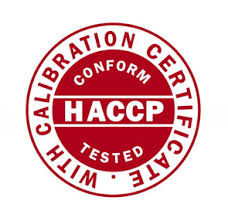
Definition: A mandatory Food and Drug Administration (FDA) seafood inspection program required by fish processors, wholesalers, and retailers.
Spanish Equivalent: Puntos de control críticos en el análisis de peligro
Grammatical Information: Noun
Example: 1) During the last three decades, Hazard Analysis Critical Control Point has been progressively introduced and applied for the benefit of the food industry. However, it should be recognised that HACCP systems have not been homogeneously implemented across all food industry sectors.
1) Durante las últimas tres décadas, Análisis de Peligros y Puntos Críticos de Control (HACCP) se ha introducido progresivamente y aplicado en beneficio de la industria alimentaria. Sin embargo, se debe reconocer que los sistemas HACCP no se han aplicado de manera homogénea en todos los sectores de la industria alimentaria.
2) Until barriers impeding HACCP have been resolved, HACCP systems will not be implemented throughout the whole food chain and it will not be able to reach its full potential as prerequisite for the international trade of foodstuffs.
2) Hasta que se hayan resuelto las barreras que impiden el HACCP, los sistemas HACCP no serán implementadas a lo largo de toda la cadena alimentaria y que no será capaz de alcanzar su pleno potencial como requisito previo para el comercio internacional de productos alimenticios.
Hybrid
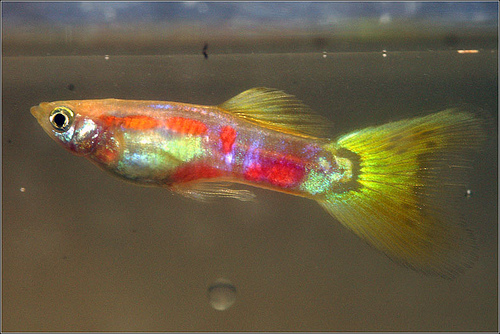
Etymology:c. 1600, “offspring of plants or animals of different variety or species,” from Latin hybrid, variant of ibrida “mongrel”, specifically “offspring of a tame sow and a wild boar”, of unknown origin but probably from Greek and somehow related to hubris. A rare word before the general sense “anything a product of two heterogeneous things” emerged c. 1850. The adjective is attested from 1716. As a noun meaning “automobile powered by an engine that uses both electricity and gasoline, “2002, short for hybrid vehicle, etc.
Definition: Hybrid fish are often brought up in conversation when it comes to species identification. In order for two fish species to hybridise, they need to be very closely related in the gene pool, even then there's not always a guaranteed cross. Hybrids are not encouraged as they can dilute species and often the offspring are ugly. Many aquarium societies will not except any Hybrid fish to be sold during club meetings or auctions, this is to prevent "contamination" of the genetics of the species.
Spanish Equivalent: Hibrido
Grammatical Information: Noun
Example: 1) An example of hybrid would be the offspring of Amphilophus labiatum breeding Amphilophus citrinellum.
1) Un ejemplo de un híbrido sería la descendencia de Amphilophus labiatum cría Amphilophus citrinellum.
2) Before the popularity of hybrid fish boomed, many hybrids went unnoticed, It was not until the arrival of the Flowerhorn and Blood Red Parrot that hybrids really started making a name for themselves in the market.
2) Antes de la popularidad de los peces híbridos en auge, muchos híbridos pasaron desapercibidos, no fue hasta la llegada de la Flowerhorn y la Blood Red Parrot que los híbridos realmente comenzaron a hacer un nombre por sí mismos en el mercado.
I
Incubation (Egg)
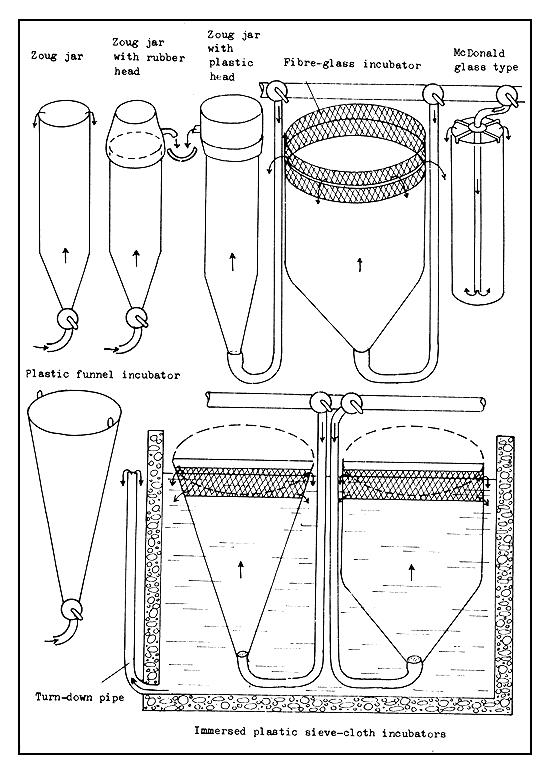
Etymology: 1610s, “brooding”,from Latin incubationem (nominative incubation) “ a laying upon eggs, “noun of action from past participle stem of incubare “to hatch”, literally “ to lie on, rest on” from in- “on” .The literal sense of “sitting on eggs to hatch them” first recorded in English 1640s.
Definition: Period from fertilization of the egg until it hatches.
Spanish Equivalent: Incubación
Grammatical Information: Noun
Example: 1) The length of the incubation period of eggs of fish that spawn in the spring is several days; of fish that spawn in the autumn, it is several months.
1)La longitud del periodo de incubación de huevos de peces que desovan en la primavera es de varios días; de los peces que desovan en el otoño, es de varios meses.
2) Long incubation periods can be hazardous to eggs because many creatures like to eat fish eggs. Fish use various strategies to reduce the number of eggs eaten. Some fish, such as rainbow trout, bury their eggs in an effort to hide.
2)Los períodos de incubación largos pueden ser peligrosos para los huevos porque muchas criaturas les gusta comer huevos de peces. Algunos peces utilizan diversas estrategias para reducir el número de huevos comido. Algunos peces, como la trucha arco iris, entierran sus huevos en un esfuerzo pora ocultarlos.
Integrated multi trophic aquaculture (IMTA)
Definition: It provides the by-products, including waste, from one aquatic species as inputs ( fertulizers, food) for another. Farmers combine fed aquaculture (e.g., fish, shrimp ) with inorganic extractive (e.g., seaweed ) and organic extractive (e.g., shellfish ) aquaculture to create balanced systems for environment remediation (biomitigation), economic stability (improved output, lower cost, product diversification and risk reduction) and social acceptability (better management practices)
Spanish Equivalent: Acuicultura multitrófica integrada (AMTI)
Grammatical Information: Noun
Example: 1) Integrated multi-trophic aquaculture is one approach to mitigate ecological effects of finfish, mariculture, and its benefits are prompting increased interest among researchers and commercial growers worldwide.
1) La acuicultura multitrófica integrada es un enfoque para mitigar los efectos ecológicos de los peces, la maricultura, y sus beneficios están impulsando un mayor interés entre los investigadores y los productores comerciales en todo el mundo.
2)Ecological engineering in aquaculture: Potential for integrated multi-trophic aquaculture (AMTI) in marine offshore systems.
2)Ingeniería ecológica en la acuicultura: Potencial para la acuicultura multitrófica integrada (AMTI) en los sistemas marinos.
Intensive Culture

Definition: Rearing of fish at densities greater than can be supported in the natural environment; utilizes high water flow or exchange rates, aeration, and requires the feeding of formulated feeds.
Spanish Equivalent: Acuicultura Intensiva.
Grammatical Information: Noun
Example: 1) The view of the Study group was that HACCP can be applied to intensive aquaculture systems but is no practical for the subsistence level.
1) El punto de vista del grupo de estudio fue que el HACCP puede aplicarse a los sistemas de acuicultura intensiva, pero no es práctico para el nivel de subsistencia.
2) This could improve the public perception of intensive aquaculture.
2) Esto podría mejorar la percepción pública de la acuicultura intensiva.
J
Juvenile Fish
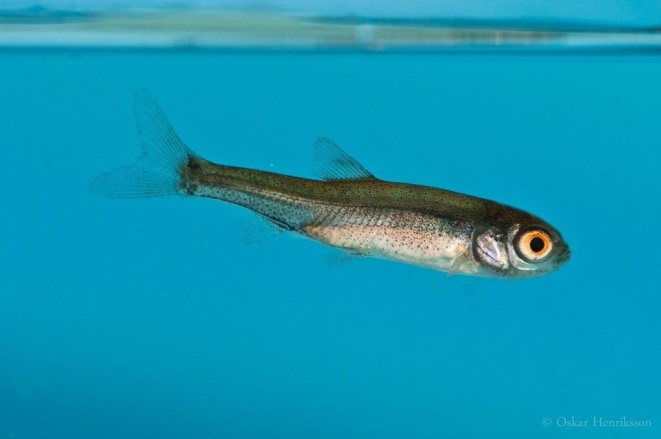
Etymology: Juvenile (adj) 1620s, from Latin juvenilis “of or belonging to youth, “ from juvenis “ young person “, originally “ young”.
Definition: Fish less than one year old. Also refers to fingerlings.
Spanish Equivalent: Alevines.
Grammatical Information: Noun
Example: 1) The project provided on-site training in pond construction and management, as well as, in juvenile fish production and fish harvesting and conservation.
1) El proyecto proporcionó formación sobre el terreno en la construcción y manejo de los estanques, así como, en la producción de alevines y la captura de peces y la conservación.
2) Support for inland fisheries; provided adequate facilities for juvenile fish rearing at the village level (Uva Wellassa University; National Aquaculture Development Authority).
2) Apoyo a la pesca continental; provisto de instalaciones adecuadas para la cría de alevines a nivel de aldea (Uva Universidad Wellassa; Autoridad de Desarrollo de la Acuicultura Nacional).
K
L
Land-based aquaculture
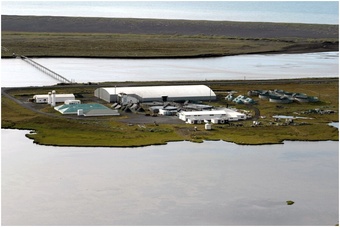
Etymology: Freshwater culture of salmons in earth ponds and small tanks began in the 1950s. The first-land based farm using pumped seas wáter in tanks was established in the year 1978 near Grindavik in southwest Iceland. The primary aims were to créate optimal temperatura and salinity conditions to enhance growth, using geotermal energy and shorten the rearing periods. In the late 1980s, a number of large land- based farms were to built produce salmon. However, only a few remained in production in the 1990s. The main reasons were excessive investment in the facilities and falling salmon prices following a phenomenal growth of the industry in many count.
Definition: It is the freshwater culture of salmonds in earth ponds and small tanks. The primary aim were to create optimal temperature and salinity conditions to enhance growth, using geothermal energy and shorten the rearing periods.
Equivalent: Acuicultura en tierra
Grammatical Information: Noun
Example: 1) Atlantic salmon is a great source of heart healthy Omega-3 fatty acids. AquAdvantage eggs are designed for growth in land-based aquaculture salmon hatcheries and grow-out facilities that will provide high-quality facility management and control.
1) El salmón del Atlántico es una gran fuente de omega-3 ácidos grasos saludables para el corazón. Huevos AquAdvantage están diseñados para el crecimiento en los criaderos de salmón en acuicultura en tierra e instalaciones de engorde que proporcionarán la gestión de instalaciones de alta calidad y control.
2) On-growing in land-based aquaculture is mainly carried out in tanks in Iceland. Earth ponds also occur, but these are rare.
2) El crecimiento se lleva en acuicultura en tierra, principalmente en depósitos en Islandia. Estanques de tierra también se producen, pero estos son la excepción.
Liquid Oxygen
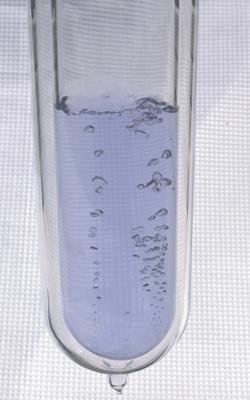
Definition: A form of oxygen cooled to a liquid state and used commonly in recirculating aquaculture systems because it is cheaper per unit than gaseous oxygen.
Spanish Equivalent: Oxígeno líquido
Grammatical Information: Noun
Example: 1) Some experiments recently made by M. Olszewsky appear to show that liquid oxygen is one of the best of refrigerants.
1) Algunos experimentos realizados recientemente por M. Olszewsky parecen mostrar que el oxígeno líquido es uno de los mejores de los refrigerantes.
2)Liquid oxygen is pale blue and extremely cold.
2)El oxígeno líquido es de color azul claro y extremadamente frío.
M
McDonald Jar or Upwelling incubators
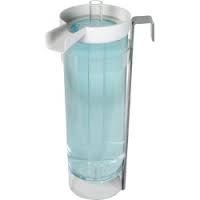
Definition: A type of incubator usually made from clear plastic designed to hold fertilized eggs during the hatching process.
Spanish Equivalent: Jarra tipo MCdonald
Grammatical Information: Noun
Example: 1) Used successfully for over 20 years by federal, state and professional hatcheries and fish producers here and abroad, this McDonald jar become the standard of the fish farming industry.
1) Se utiliza con éxito desde hace más de 20 años por los criaderos federales, estatales y profesionales y productores de pescado aquí y en el extranjero, esta jarra tipo McDonald se convierte en el estándar de la industria de la piscicultura.
2)Mcdonald Jar can be used for a wide variety of species like: Salmonids, Thymallids, Coregonids, Acipenserids, Percids, Cyprinids etc. Made of clear, high impact, easy to clean plastic, this uniquely designed hatching system enables uniformely distributed water to rotate fish eggs ever so gently and evenly.
2) La jarra tipo Mcdonald se puede utilizar para una amplia variedad de especies como: salmónidos, Thymallids, coregónidos, acipenserids, pércidos, ciprínidos etc. Hechos de plástico claro, de alto impacto, fácil de limpiar, este sistema de eclosión de diseño único permite distribuir uniformemente el agua girar los huevos de peces muy suavemente y uniformemente.
Mariculture
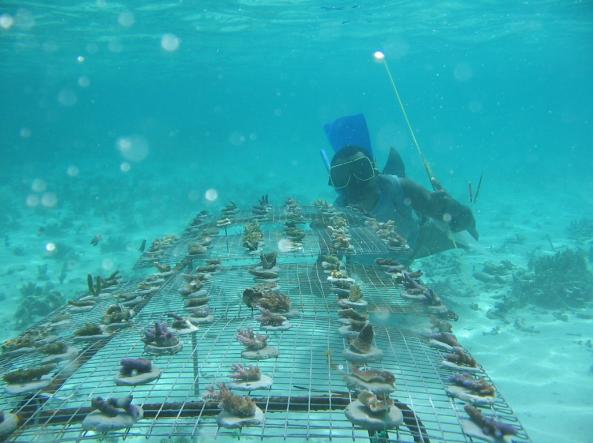
Definition: It is a specialized branch of aquaculture nvolving the cultivation of marine organisms for food and other products in the open ocean, an enclosed section of the ocean, or in tanks, ponds or raceways which are filled with seawater.
Spanish Equivalent: Maricultura
Grammatical Information: Noun
Example: 1) In Alaska there is big talk of mariculture farming. The state is basically making tidelands available for a ten-year lease for people to apply for and raise shellfish.
1) En Alaska hay gran charla de la agricultura de la maricultura. El estado está básicamente haciendo esteros disponible para un contrato de arrendamiento de diez años para las personas a solicitar y recaudar los mariscos.
2)Mariculture is usually a part-time job for many shellfish farmers. Due to the distances from communities, site development is required for most places to provide small living facilities where they have a small kitchen and enough beds for the staff. Along with facilities the start-up farmer needs gear.
2) La maricultura es por lo general un trabajo a tiempo parcial para muchos agricultores de mariscos. Debido a las distancias de las comunidades, se requiere el desarrollo de sitios para la mayoría de lugares para ofrecer a las pequeñas instalaciones de vida en los que tienen una pequeña cocina y camas suficientes para el personal. Junto con las instalaciones del agricultor puesta en marcha necesita de cambios.
Mouth Brooder
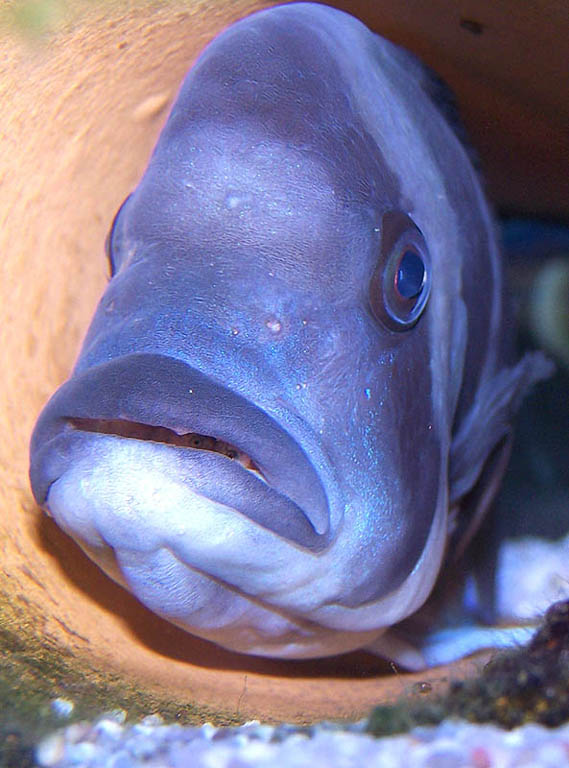
Definition: A species of fish in which either the female or male incubates the fertilized eggs in the mouth. Most species of tilapia grown in the United States are maternal mouth brooders.
Spanish Equivalent: Incubación Bucal.
Grammatical Information: Noun
Example: 1) Most African Cichlids are what's called "maternal mouth brooders."
1) La mayoría de cíclidos africanos son lo que se llama "incubadores bucales paternos."
2)...the potential for sexual selection in this sexually monochromatic maternal mouth brooder...
2) ... el potencial de la selección sexual en esta sexualmente monocromática incubadora bucal materna...
N
National oceanic and atmospheric administration (NOAA)

Definition: The National Oceanic and Atmospheric Administration (NOAA) is a federal agency focused on the condition of the oceans and the atmosphere.
Spanish Equivalent: Administración Nacional Oceánica y Atmosférica
Grammatical Information: Noun
Example: 1) Evidence for interannual variability of the carbon cycle from the National Oceanic and Atmospheric Administration and Climate Monitoring and Diagnostics Laboratory Global Air Sampling Network
1) La evidencia de variabilidad interanual del ciclo del carbono de la Administración Nacional Oceánica y Atmosférica y el laboratorio global...
2) NOAA estimates its planned expenditures will create a significant number of new jobs and
strengthen the economy, spurring the creation of additional jobs.
2) NOAA estima que sus gastos planificados creará un importante número de nuevos puestos de trabajo y fortalecer la economía, estimulando la creación de puestos de trabajo adicionales.
Nitrification
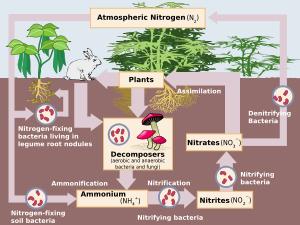
Etymology:1827, from French nitrification (1787, de Moryeau), from nitrifier (1777), from nitre.
Definition: Nitrification is the biological oxidation of ammonia or ammonium to nitrite followed by the oxidation of the nitrite to nitrate.
Spanish Equivalent: Nitrificación.
Grammatical Information: Noun
Example: 1) Other types of EC fertiliser may contain nitrogen in a different form for which nitrification inhibitors are not effective.
1) Otros tipos de abono CE pueden contener nitrógeno en una forma diferente para que los inibidores de nitrificación no sean eficaces.
2) In most of this acid soil, biological activity is much reduced and this slows down the decomposition of plant debris and the nitrification process.
2) En la mayor parte de este suelo ácido,la actividad biológica se reduce mucho y esto ralentiza la descomposición de restos vegetales y el proceso de nitrificación.
O
Offshore aquaculture or Open ocean aquaculture
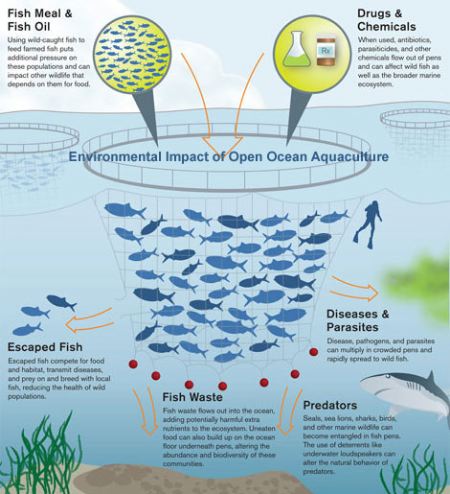
Definition It is an emerging approach to mariculture or marine farming where fish farms are moved some distance offshore. The farms are positioned in deeper and less sheltered waters, where ocean currents are stronger than they are inshore
Spanish Equivalent: Acuicultura en mar abierto
Grammatical Information: Noun
Example: 1) Extensive open ocean aquaculture development within wind farms in Germany: the prospect of offshore aquaculture co-management and legal constraints
1)El extenso desarrollo de la acuicultura en mar abierto dentro de parques eólicos en Alemania: la perspectiva de la acuicultura en mar abierto co-gestión y restricciones legales.
2) Analysis of coastal and offshore aquaculture: application of the FARM model to multiple system and shellfish species.
2) Análisis de la acuicultura costera y en mar abierto: aplicación del modelo GRANJA a múltiples especies de sistema y mariscos.
Osmosis
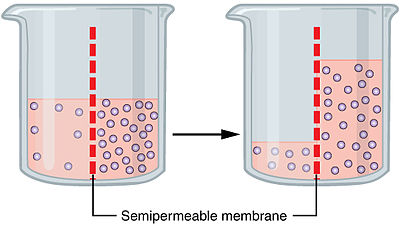
Etymology: 1867, Latinized from osmose (1854), shortened from endosmosis (1830s), from endomose “inward passafe of a fluid through a porous septum” (1829), from French endo-“inward” + Greek osmos “ a thrusting, a pushing, “from stem of othein “to push, to thrust,” from PIE *wedhe- to push, strike” (cognates: Sanskrit vadhati “ pushes, strikes, destroys, “ Ayestan vadaya- “to repulse”). Figurative sense is from 1900.
Definition: The diffusion of liquid that takes place through a semipermeable membrane between solutions starting at different osmotic pressures, and that tends to equalize those pressures. Water always moves toward the more concentrated solution, regardless of the substances dissolved, until the concentration of dissolved particles is equalized, regardless of electric charge.
Spanish Equivalent: Osmosis, Ósmosis
Grammatical Information: Noun
Example: 1) Eventually, from varying degrees of exploration and osmosis, we will all see the awesome implications of this growing pattern.
1) Con el tiempo, a partir de diversos grados de la exploración y la ósmosis, todos vamos a ver las implicaciones impresionantes de este patrón de crecimiento.
2) Since then, Israeli companies have developed techniques including reverse osmosis to purify water.
2) Desde entonces, las empresas israelíes han desarrollado técnicas incluida la ósmosis inversa para purificar el agua.
P
pH
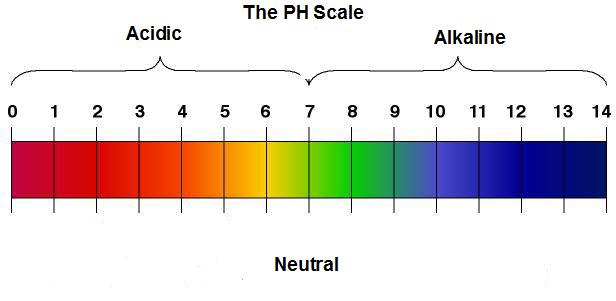
Definition: An expression of the acid-base relationship designated as the logarithm of the reciprocal of the hydrogen-ion activity; the value of 7.0 expresses neutral solutions; values decreasing below 7.0 represent increasingly acidic solutions; values increasing about 7.0 represent increasingly basic solution.
Spanish Equivalent: pH
Grammatical Information: Noun
Example: 1) The neutral pH of Pola Office+ ensures maximum comfort during and after treatment.
1) El pH neutro de Pola Office + garantiza el máximo confort durante y después del tratamiento.
2) Patulin is relatively temperature stable,particularly at acid pH.
2) La patulina es relativamente temperatura estable, especialmente a pH ácido.
Pond
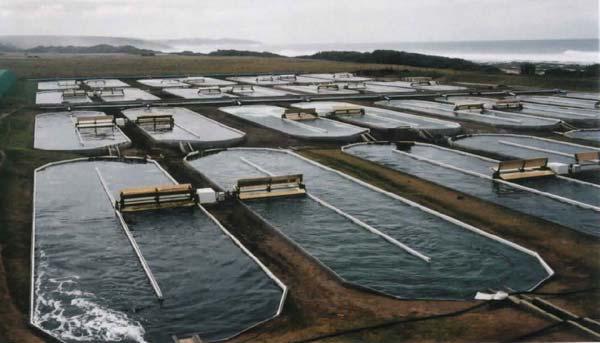
Etymology: c.1300 (mid-13c. in compounds), “artificially banked body water, “variant of pound ”enclosed place”. Applied locally to natural pools and small lakes from late 15c. Jocular reference to “the Atlantic Ocean” dates from 1640s. Pond scum (Spirogyra) is from 1864 (also called frog- spittle and brook-silk. As figurative for “someone extremely repulsive, “from 1984.
Definition: A water impoundment constructed and managed for commercial aquaculture production.
Spanish Equivalent: Estanque.
Grammatical Information: Noun
Example: 1) If the sediments reach a maximum level in the settling pond, an automatic flushing procedure is usually started.
1) Si los sedimentos lleguen a un nivel máximo en el estanque de sedimentación, por lo general se inicia por un procedimiento de lavado..
2) The pond is used to keep fish throughout the year.
2) El estanque se utiliza para mantener los peces durante todo el año.
Phytoplankton
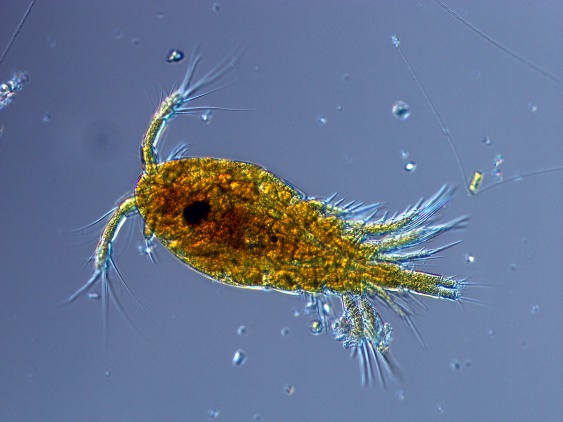
Etymology: From phyto- + plankton. From Ancient Greek φυτόν (phutón, “plant”) + πλαγκτόν (planktón), neuter of πλαγκτός (planktós, “wandering”). However, they are no longer classified as plants, so the terminology is showing a historical meaning.
Definition: Microscopic plants suspended in water with little or no capability for controlling their position in the water mass; frequently referred to as algae.
Plankton The various, mostly microscopic, aquatic organisms (plants and animals) that serve as food for larger aquatic animals.
Spanish Equivalent: Fitoplancton
Grammatical Information: Noun
Example:1) Micro-algae like Spirulina and Chlorella are well known for their health and detoxification benefits, but another ancient micro-algae, specifically certain strains of marine phytoplankton, can be hundreds of times more potent and have even more profound benefits.
1) Micro-algas como la espirulina y Chlorella son bien conocidos por sus beneficios en la salud y desintoxicación, pero otra antigua microalgas, específicamente ciertas cepas de fitoplancton marino, pueden ser cientos de veces más potentes y tienen aún más profundos beneficios.
2)Phytoplankton comprise two very different kinds of organisms. The larger category include, single- celled algae known as prostists- advanced eukaryotic cells, similar to protozoans.
2) El fitoplancton comprenden dos tipos muy diferentes de organismos. La categoría más amplia incluye, algas unicelular conocido como células eucariotas avanzada protists-, similar a los protozoos.
Predaceous/Carnivorous Fish
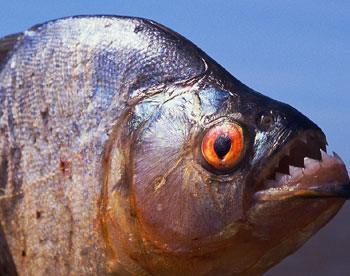
Definition: A fish species that eats other fish.
Spanish Equivalent: Peces depredadores / Peces carnívoros
Grammatical Information: Noun
Example: 1) According to news originating from Wichita Falls, Texas, by NewsRx editors, the researches stated “ The longnose gar” (Lepisosteus osseus) is a primitive predaceous fish.
1) De acuerdo a las noticias provenientes de Wichita Falls, Texas, por los editores NewsRx, los investigadores declararon "El pejelargarto narigudo " (Lepisosteus óseo) es un pez depredador primitivo.
2) Throughout the year, predaceous fish are important to fisheries management. Predaceous fish include largemouth and smallmouth bass, walleye, sauger, saugeye, wiper and striped bass.
2) A lo largo del año, los peces depredadores son importantes para la gestión de las pesquerías. Peces depredadores incluyen bocazas y lobina de boca chica, la lucioperca, sauger, saugeye, limpiaparabrisas y bajo rayado.
Pisciculture
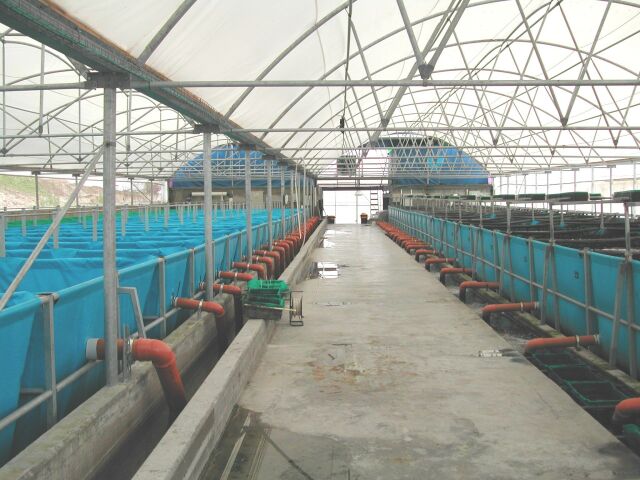
Etymology: Pisci- + culture.
Definition: Fish farming or pisciculture is the principal form of aquaculture, while other methods may fall under mariculture.
Spanish Equivalent: Psicultura
Grammatical Information: Noun
Example: 1) Seth Green,was an American pioneer in fish farming (pisciculture and aquaculture). He established the firs fish hatchery in the United States in the Town of Caledonia New York
1) Seth Green, era un pionero americano en el cultivo de peces (piscicultura y acuicultura). Él estableció el priemr criadero de peces en los Estados Unidos en la ciudad de Caledonia Nueva York.
2) The important role of pisciculture is demonstrated using data on development of the world fishery.
2) El importante papel de la piscicultura se demuestra el uso de datos sobre el desarrollo de la pesca mundial.
Q
R
Raceway or flow-through system
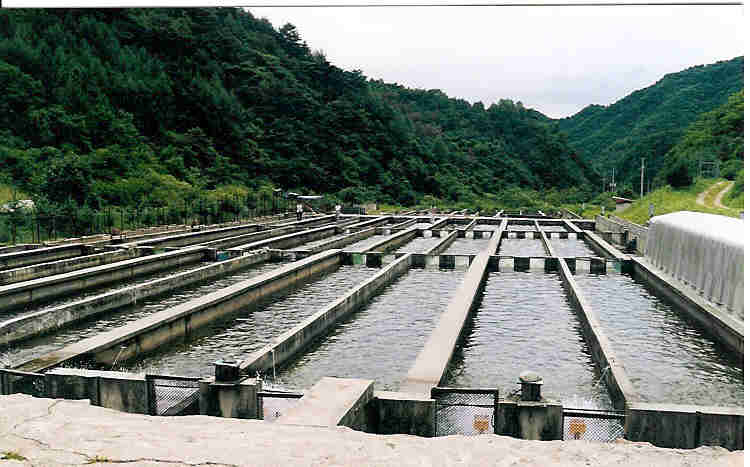
Definition: A production system in which water flows through a series of troughs or tanks at relatively high flow rate. Smaller fish are usually stocked at the beginning of the raceway and larger fish stocked toward the end.
Spanish Equivalent: Canal
Grammatical Information: Noun
Example: 1) Raceway aquaculture, or a flow-through system, uses a continuously running source of water and is a profitable method of raising fish.
1)La acuicultura de canal , o un sistema de flujo continuo, utiliza una fuente en funcionamiento continuo de agua y es un método rentable de la cría de peces.
2) Raceway, ponds and channels are designed in such a way that no water is stagnant at any time in the fish pond.
2) Canales, estanques y canales están diseñados de tal manera que el agua no se estanca en cualquier momento en el estanque de peces.
Recirculating aquaculture systems (RAS)
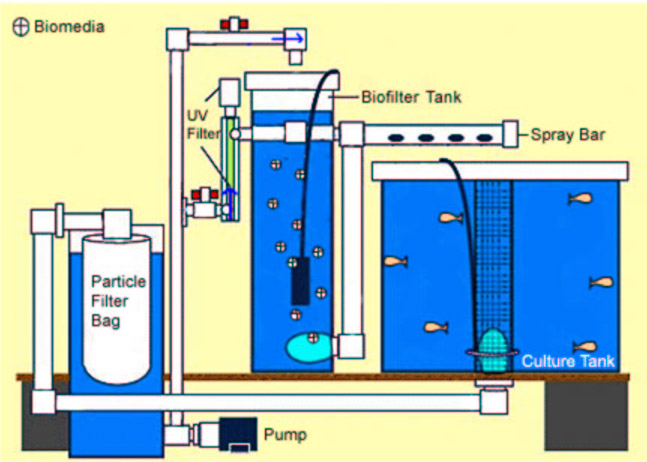
Definition: Recirculating aquaculture systems (RAS) operate by filtering water from the fish (or shellfish) tanks so it can be reused within the tank. This dramatically reduces the amount of water and space required to intensively produce seafood products. The steps in RAS include solids removal, ammonia removal, Co2 removal and oxygenation.
Spanish Equivalent: Sistemas de recirculación de agua (SRA)
Grammatical Information: Noun
Example: 1) Aquabusiness is developing a continental aquaculture project based on the recirculating aquaculture system , pioneer in Spain and with excellent future expectancies.
1) Aquabusiness está desarrollando un proyecto de acuicultura continental basada en el sistema de recirculación de agua, pionero en España y con excelentes expectativas de futuro
2) The main outstanding feature of the devices is its non- recirculating aquaculture system with continuous material dosing via precision-made geared pumps.
2) La principal característica sobresaliente de los dispositivos que no tienen sistemas de recirculación de agua es la dosificación continua de material a través de bombas dirigidas de precisión a medida.
.S
Sea Water
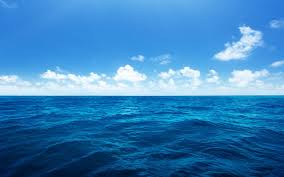
Etymology: From Middle English seewater, from Old English sǣwæter (“seawater”), equivalent to sea + water. Cognate with Dutch zeewater (“seawater”).
Definition: Water containing from 3.0 to 3.5% total salts.
Spanish Equivalent: Agua de Mar
Grammatical Information: Noun
Example: 1) The approach was changed to seawater desalination in order to prevent further deterioration of the aquifer.
1) El enfoque se cambió para desalinización de agua de mar con el fin de evitar un mayor deterioro del acuífero.
2) Given the almost unlimited availability of seawater, desalination could provide sustainable water supply to many municipalities and industries.
2) Dada la disponibilidad casi ilimitada de agua de mar, la desalinización podría proporcionar un suministro sostenible de agua a muchos municipios e industrias
Sustainable fish farming
Definition: Sustainable Fish Farming is harvest at a sustainable rate, where the fish population does not decline over time because of fishing practices. Sustainability in fisheries combines theoretical disciplines, such as the population dynamics of fisheries, with practical strategies, such as avoiding overfishing through techniques such as individual fishing quotas, curtailing destructive and illegal fishing practices by lobbying for appropriate law and policy, setting up protected areas, restoring collapsed fisheries, incorporating all externalities involved in harvesting marine ecosystems into fishery economics, educating stakeholders and the wider public, and developing independent certification programs
Spanish Equivalent: Psicultura Sostenible
Grammatical Information: Noun
Example: 1) Consumer awareness of sustainable fish farming production has led to increased interest in certification for sustainable aquaculture practices.
1) El conocimiento del consumidor de la producción de la psicultura sostenible ha llevado a un mayor interés en la certificación de las prácticas de acuicultura sostenibles.
2) Sustainable fish farming has spent eight years developing tank system.
2) La Piscicultura Sostenible ha pasado ocho años en el desarrollo del sistema tanque.
Sodium Bicarbonate
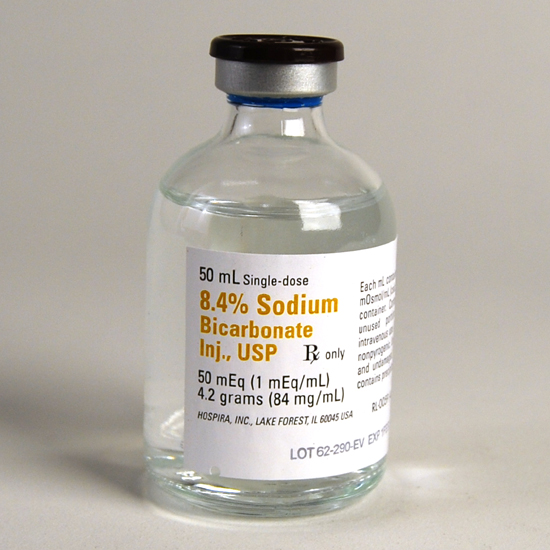
Definition: A chemical compound (NaHCO3) used as a buffer in recirculating aquaculture systems.
Spanish Equivalent: Bicarbonato de Sodio
Grammatical Information: Noun
Example: 1) Alkaline medications such as potassium citrate and sodium bicarbonate correct the acidic condition of the body.
1) Los medicamentos alcalinos, como el citrato de potasio y bicarbonato de sodio corrigen la condición ácida del cuerpo.
2) Then add 5 g of Rochelle salt (potassium sodium tartrate) and a sufficient quantity of sodium bicarbonate for analysis for the solution to show an alkaline reaction to a litmus paper test.
2) A continuación, añadir 5 g de sal de Rochelle (tartrato de sodio y potasio) y una cantidad suficiente de bicarbonato sódico para análisis para que la solución sea alcalina al papel de tornasol.
T
U
Urea
Etymology: compound found in the urine of animals, 1806, LATINIZED FROM French urée (1803),from Greek ouron “urine”
Definition: A nitrogenous waste product of mammals containing two nitrogen ions.
Spanish Equivalent: Urea
Grammatical Information: Noun
Example: 1) It consists of a mixture of urea and ammonium nitrate and water.
1) Se compone de una mezcla de urea y nitrato de amonio y agua.
2) It is a non-toxic aqueous urea solution that chemically reduces NO x emissions from diesel-fuelled engines.
2) Se trata de una solución acuosa de urea no tóxica que reduce químicamente las emisiones de NOx de los motores diesel.
V
W
Warm Water Species
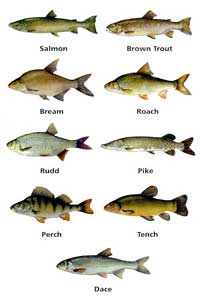
Definition: Generally, fish that spawn at temperatures above 60°F. The chief cultured warm water species are basses, sunfish, catfish, and minnows. See Cold Water Species; Cool Water Species.
Spanish Equivalent: Especies de aguas cálidas.
Grammatical Information: Noun
Example: 1) Other types of fish which may contain the toxin at unpredictable times include sea bass, and a wide range of tropical reeffish and warm-water species.
1) Otros tipos de pescado que pueden contener la toxina en épocas impredecibles incluyen corvina, y una amplia gama de especies de peces de arrecífes tropicales y especies de aguas cálidas.
2) Anglers have reported excellent fishing for warm water species including yellowfin tuna, yellowtail and dorado, also known as mahi-
2) Los pescadores han informado excelente pesca de especies de aguas cálidas incluyendo amarilla atún, jurel y dorado, también conocido como mahi-mahi.
Water Quality.
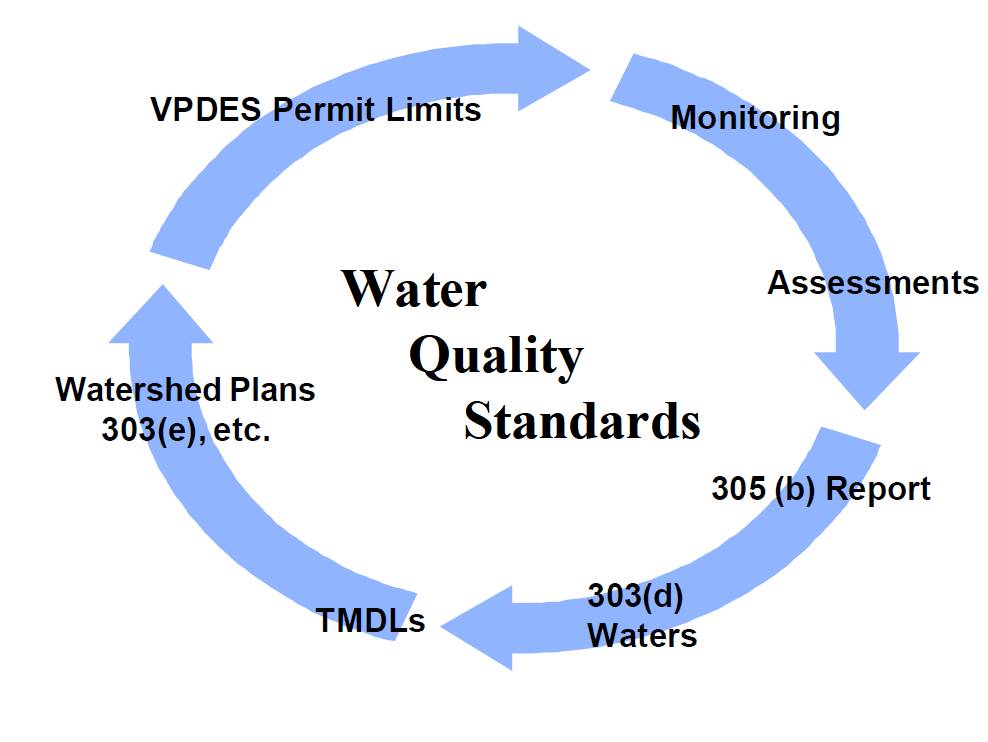
Definition: As it relates to fish nutrition and general fish health, involves dissolved minerals, gases, suspended, and settleable solids found in fresh water
Spanish Equivalent: Calidad del agua
Grammatical Information: Noun
Example: 1) I believe that the Member States have been given too much leeway in setting water quality standards.
1) Creo que los Estados miembros se les ha dado demasiada libertad de acción en el establecimiento de normas de calidad del agua.
2) Water quantity problems often amplify existing problems of water quality and pollution.
2)Los problemas de cantidad de agua a menudo amplifican los problemas actuales de la calidad del agua y la contaminación.
X
Xanthophylls
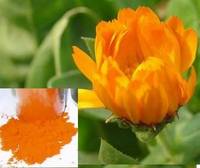
Etymology: French xanthophylle, from xanth- + -phylle –phyll. First Known Use: 1838
Definition: A class of naturally occurring yellow and orange plant pigments added to fish feeds to enhance the color of skin pigments or muscle. In white flesh fish, xanthophylls impart an undesirable yellow color.
Spanish Equivalent: Xantófila.
Grammatical Information: Noun
Example: 1) One theory suggests that volatile oils in the plant act synergistically with other constituents called xanthophylls.
1) Una teoría sugiere que los aceites volátiles en la planta actúan sinérgicamente con otros componentes llamados xantófilas.
2) Xanthophylls are further assumed to be involved either directly or indirectly in the non-photochemical quenching (NPQ) of excess light energy in the antenna of PSII.
2)Se supone que las xantófilas estan involucradas directa o indirectamente en la extinción no fotoquímica (NPQ) del exceso de energía de la luz en la antena de PSII.
Y
Yeast
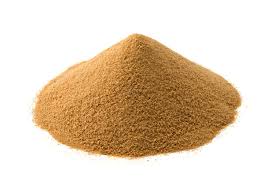
Etymology:Old English gist “yeast, froth;” from Proto-Germanic *jest-(cognates: Old Norse jastr, Swedish jäst, Middle High German gest, German Gischt “foam,froth,” Old High German jesan, German gären “to ferment”), from PIE root *yes-“ to boil, foam, froth” (cognates: Sanskrit yasyati “boils, seethes, “Greek zein”to boil,” Welsh ias “ seething, foaming”)
Definition: A component of fish feed, especially for larvae feeding used for its high protein content.
Spanish Equivalent: Levadura
Grammatical Information: Noun
Example:1) The evolution of new detailed production rules on certain animal species, organic aquaculture, seaweed and yeast used as food or feed on community level will require more time and therefore should be elaborated in a subsequent procedure.
1) La evolución de las nuevas reglas de producción detallada sobre ciertas especies animales, la acuicultura orgánica, algas y levaduras utilizadas como alimentos o alimentación a nivel comunitario exigirá más tiempo y por lo tanto debe ser elaborado en un procedimiento posterior.
2)… under particular feeding conditions as, for instance, underfeeding or feeding of cows with feed yeast or Ca-soaps, generally applicable.
2) ... en condiciones particulares de alimentación como, por ejemplo, subalimentación o alimentación de vacas con levaduras de pienso o jabones de Ca, de aplicación general.
Z
Zooplankton
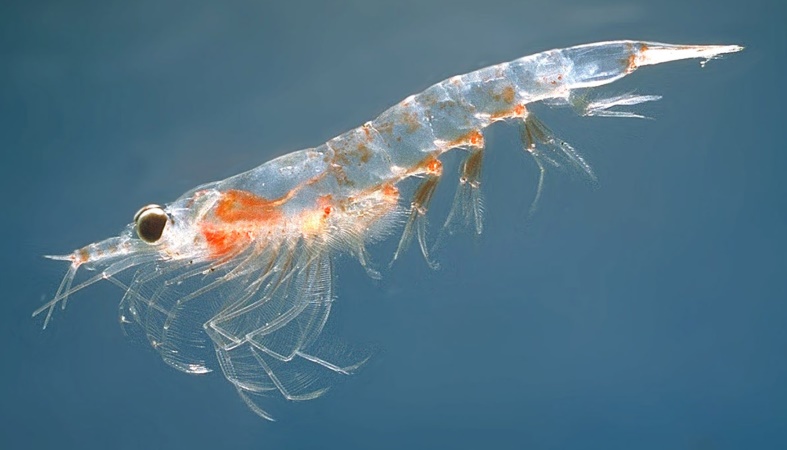
Etymology: 1901, from zoo-“animal”+ plankton.
Definition: Minute animals in water, chiefly rotifers and crustaceans ,that depend upon water movement to carry them about, having only weak capabilities for movement. They are important prey for young fish
Spanish Equivalent: Zooplancton
Grammatical Information: Noun
Example: 1) Feeding is predominantly pond-based (bed nutrients, zooplankton etc. in the pond).
1) La alimentación es predominantemente a base de estanque (nutrientes de cama, etc. zooplancton en el estanque).
2) Zooplankton belongs to the primary trophic level of the marine ecosystem.
2) El zooplancton pertenece al nivel trófico primaria del ecosistema marino.
Zygote
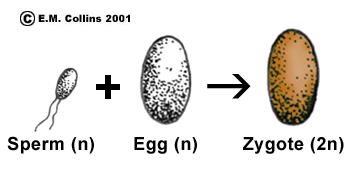
Etymology: 1880, coined 1878 by German cytologist Eduard Strasburger (1844-1912), the widespread attribution to William Bateson being apparently erroneous; from Greek zugotos “yoked”,from zugon “yoke”
Definition: Fertilized egg.
Spanish Equivalent: Cigoto
Grammatical Information: Noun
Example: 1) With ZIFT, the egg is fertilized with sperm in the laboratory, forming a zygote, but is not allowed to develop into an embryo.
1) Con ZIFT, el óvulo es fertilizado con el esperma en el laboratorio, formando un cigoto, pero no se le permite convertirse en un embrión.
2) The zygote continues to divide, creating an inner group of cells with an outer shell.
2)El zigoto continúa dividiéndose, creando un grupo interno de células con una envoltura externa.
